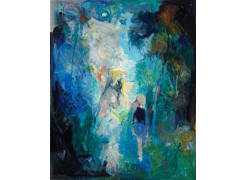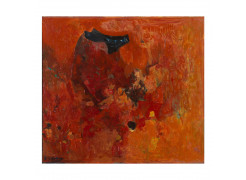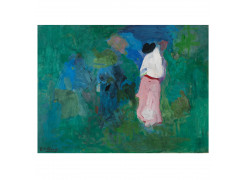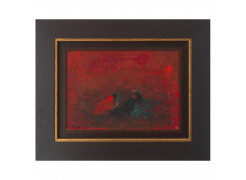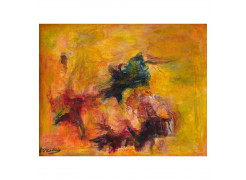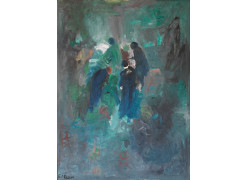Additional info:
Elie Kanaan holds a pivotal place in the evolution of modern Lebanese painting. His formation developed largely outside formal institutions, though his subsequent period of study in Paris refined an already instinctive mastery of gesture and colour. After receiving first prize at Lebanon’s Salon du Printemps in 1957 and a UNESCO scholarship to the Académie de la Grande Chaumière, he entered the artistic milieu of Yves Alix and Jacques Villon, encounters that anchored him within the Parisian avant-garde. These years consolidated a visual language in which the tension between figuration and abstraction became the core of his expression. His early works were informed by post-Impressionist colourism, yet gradually evolved towards a lyrical abstraction where structure dissolved into chromatic resonance. In these compositions, rhythm replaced outline, and the line—once a means of definition—yielded to the fluidity of gesture. Critics such as Helen Khal recognised in his painting a sensuous cadence akin to the musicality of Arabic poetry, a metaphor that aptly conveys the fusion between material surface and emotive depth within his oeuvre. Throughout his career, Kanaan exhibited extensively in Beirut, Paris, New York, São Paulo and Moscow. His landscapes and interiors disclose a sustained search for equilibrium between the visible and the evoked, between matter and light. From the late 1960s, as Lebanon entered a time of upheaval, his canvases assumed a more contemplative tone: colour became atmosphere, and the act of painting, a mode of endurance. Remaining faithful to his chromatic discipline until his death in 2009, Elie Kanaan forged a body of work that mediates between the intellectual precision of European modernism and the lyrical sensibility of Middle Eastern culture.
-
Marius Bunescu
Caracal, Romania , 1881 - Bucharest, Romania, 1971 -
Flavie Audi
b. 1986 -
Viorel Grigore
b. Bucharest, Romania, 1971 -
Arthur Verona
Brăila, Romania, 1867 - Bucharest, Romania, 1946 -
Józef Hałas
Nowy Sącz, Poland, 1927 - Wrocław, Poland, 2015
